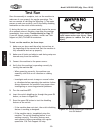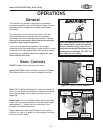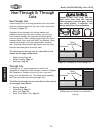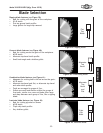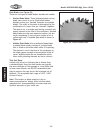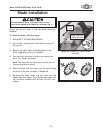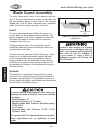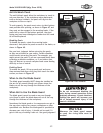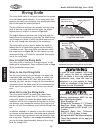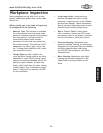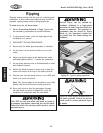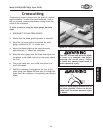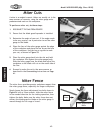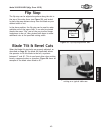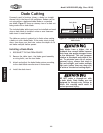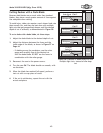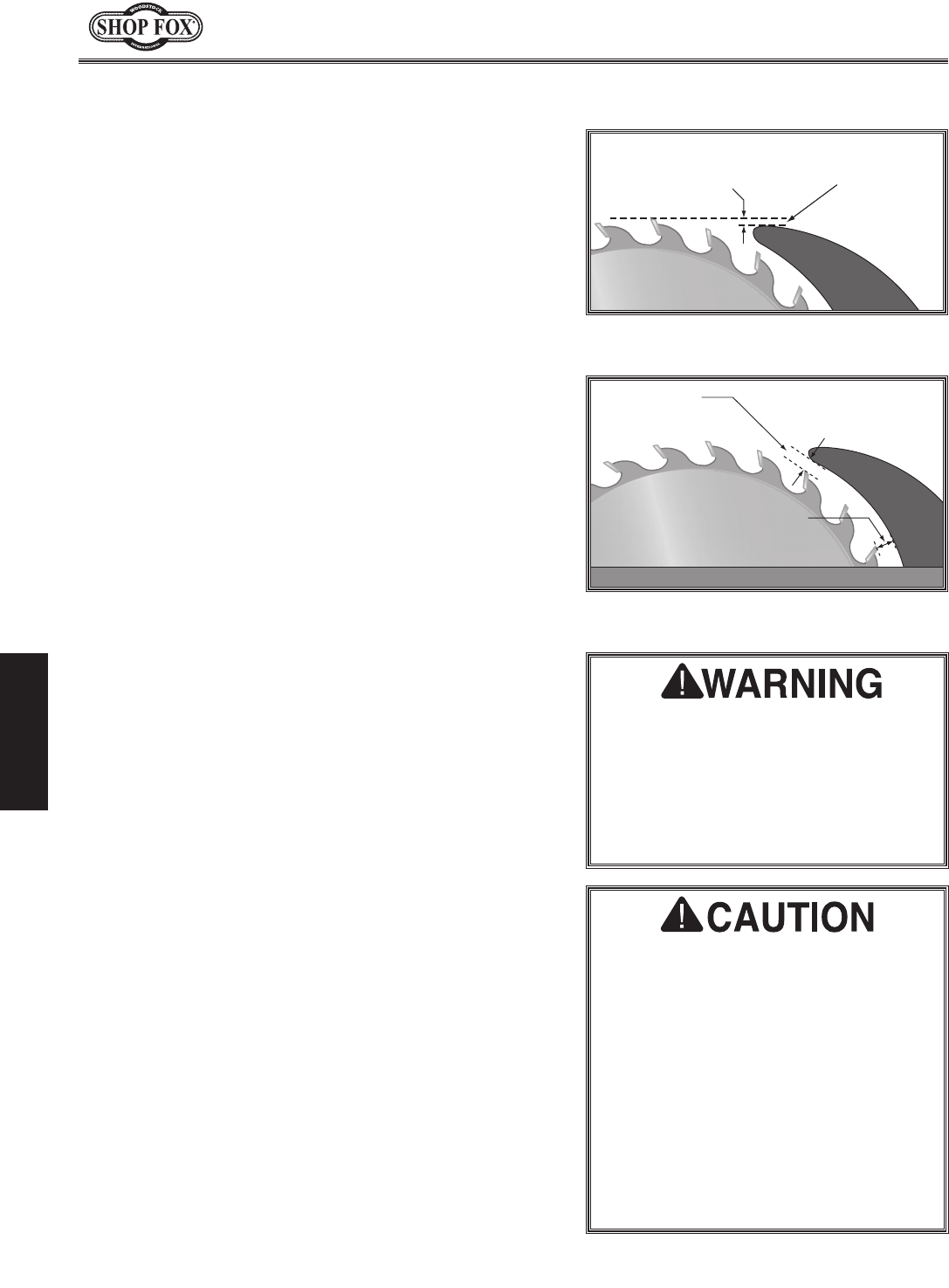
-38-
Df[\cN(/(0&N(/)'D]^%J`eZ\('&('
FG<I8K@FEJ
I`m`e^Be`]\
The riving knife works in the same manner as the spread-
er on the blade guard assembly. It is a metal plate that
prevents the newly cut workpiece from pinching the back-
side of the blade and causing kickback.
The key difference between the spreader and the riving
knife is that the riving knife mounts below the blade's
highest point of rotation, as shown in =`^li\+0.
The height difference between the riving knife and the
blade allows the workpiece to pass over the blade during
non-through cuts (those in which the blade does not cut
all the way through the thickness of the workpiece).
The riving knife acts as a barrier behind the blade to
reduce the risk of hands being pulled into the blade if
a kickback occurs. The riving knife must be kept within
the range shown in Figure 50. For that reason, we only
recommend using a 10" blade for operations that require
use of the riving knife.
=`^li\+0% Height difference between
riving knife and blade.
?\`^_k;`]]\i\eZ\
D`e`dld(dd
DXo`dld,dd
I`m`e^
Be`]\
=`^li\ ,'. Allowable top and bottom
distances between riving knife and blade.
D`e`dld*dd
Kfg;`jkXeZ\
9fkkfd;`jkXeZ\
DXo`dld/dd
D`e`dld*dd
DXo`dld/dd
KXYc\
I`m`e^
Be`]\
@efi[\ikfnfibgifg\icp#k_\i`m`e^
be`]\ ZXeefk Y\ Y\ek fi d`jXc`^e\[
n`k_k_\YcX[\%@]k_\i`m`e^be`]\^\kj
XZZ`[\ekXccp Y\ek# kXb\ k_\ k`d\ kf
jkiX`^_k\e `k fi aljk i\gcXZ\ `k% Lj`e^
X Y\ek fi d`jXc`^e\[ i`m`e^ be`]\ n`cc
`eZi\Xj\k_\i`jbf]b`ZbYXZb
To ensure riving knife works safely, the
following requirements MUST be met
when installing new blades:
9cX[\;`Xd\k\i1('
I`m`e^Be`]\K_`Zbe\jj1'%()%,dd
I\hl`i\[ 9cX[\ 9f[p K_`Zbe\jj
\oZcl[`e^k\\k_ 1'%'.(Æ'%'0+(%/Æ
)%+dd
I\hl`i\[ 9cX[\ B\i] K_`Zbe\jj1
'%(')Æ'%()-)%-ddÆ*%)dd
Iiving knife MUST be aligned to blade;
K_\j\ I\hl`i\d\ekj[f efkXggcp kf
[X[fYcX[\j%
?fnkf@ejkXcck_\I`m`e^Be`]\
The riving knife is installed in a similar manner to the
blade guard and spreader. Refer to Blade Guard on GX^\
*- for installation instructions.
N_\ekfLj\k_\I`m`e^Be`]\
Use the riving knife for all non-through cuts made with
a standard table saw blade (i.e., dadoes or rabbet cuts
in which a dado blade is NOT used, and when using a
tenoning jig). Also, use the riving knife for those special
operations where the blade guard or its components get
in the way of safe operation, such as with very narrow
cuts.
When Not to Use the Riving Knife
The riving knife CANNOT be used with a dado blade
that has a diameter smaller than 10." Otherwise, the
riving knife height will exceed the blade height and the
workpiece will hit the riving knife during the cut, forcing
the operator into a dangerous situation of trying to turn
the saw off with the workpiece stuck halfway through the
cut.
In addition, although it is possible to use the riving knife
for through cutting operations, the blade guard assembly
offers far more injury protection and risk reduction than
the riving knife. Therefore, we strongly recommend that
you use the blade guard assembly instead of the riving
knife for through cuts.



